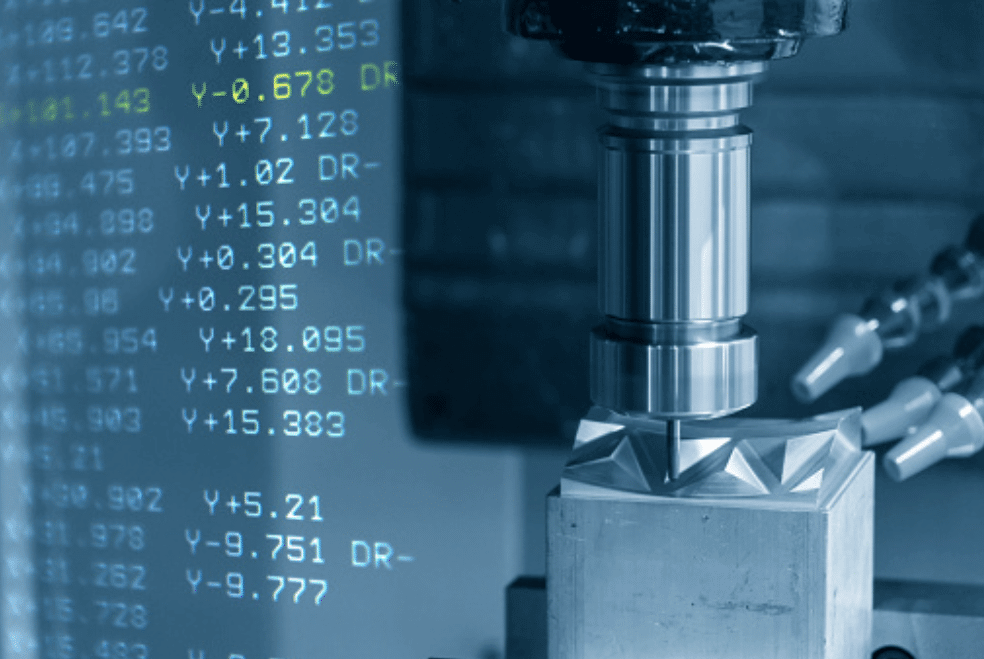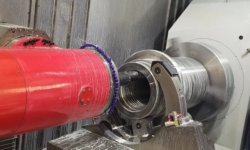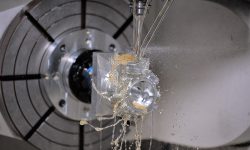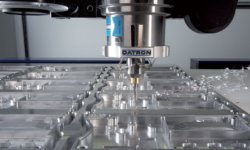Navigating the world of CNC machining can be a complex task, especially when it comes to understanding the intricacies of programming language like M code. In this ultimate guide, we’ll delve into everything you need to know about M code, a critical component in CNC programming. Whether you’re a seasoned machinist, an aspiring CNC programmer, or someone just curious about manufacturing processes, this guide will shed light on the multifaceted role of M code in the world of computer numerical control.
What is M-code?
M-code, also known as miscellaneous code, is an essential aspect of CNC machining, working in tandem with G-codes. While G-code directs the geometric movements of the machine, M-code is responsible for instructing the machine’s various non-movement functions.
Specifically, M-code handles instructions related to machine operations such as turning the spindle on or off, coolant control, tool change, and program stops. In essence, M-code serves as the backbone of the manufacturing process, allowing the CNC machine to perform precise actions beyond simple movements.
Who Invented M-code Programming?
M-code programming has roots in the mid-20th century, at a time when the transition from manual to automated manufacturing was gaining momentum.
The invention of M-code is often attributed to John T. Parsons and Frank L. Stulen, pioneering engineers who developed numerical control concepts. With the collaboration of the Massachusetts Institute of Technology (MIT) and funding from the U.S. Air Force, the first CNC machines utilizing M-code and G-code were developed.
This innovation was instrumental in transforming the manufacturing industry, enabling unprecedented precision and efficiency in production.
What is the Importance of M-code?
Understanding the importance of M-code requires a deep dive into its functions and impact on the manufacturing process. Here’s a detailed look at why M-code is vital:
- Optimization of CNC Operations: M-code streamlines the machining process by providing specific instructions for various machine functions. These codes enable the automation of actions like tool change and coolant control, thus reducing human intervention and errors.
- Enhanced Flexibility: With M-code, CNC machines can perform a wide array of tasks. Whether it’s stopping the spindle (M05) or activating coolant (M08), the versatility of M-code allows for a broad spectrum of applications in manufacturing.
- Integration with G-code: M-code doesn’t work in isolation; it complements G-code, the instructions that govern geometric movements. Together, G-code and M-code create a comprehensive programming language that covers all aspects of CNC machining, from positioning to specific actions.
How Does a M-code Work?
To grasp how M-code works, one must understand its integration with CNC programming and the specific tasks it governs. Essentially, M-code is a set of commands that control machine functions not related to movements.
For example, the command M03 activates the spindle to rotate clockwise, while M04 commands it to rotate counterclockwise. These codes are written in CNC programming language and interpreted by the CNC machine through its control system.
- M-code Programming: M-code programming involves using specific codes to instruct the machine’s actions. These codes are written in a specific sequence and format, following the requirements of the particular CNC machine being used.
- Execution and Control: Once the M-code is programmed, the CNC machine reads and implements the instructions. The machine’s controllers interpret the codes and execute the corresponding actions, ensuring accuracy and consistency in operations.
What is the Structure of a M-code?
M-code structure is relatively straightforward, comprising a letter “M” followed by a numerical value. The combination of the letter and number represents a specific command or instruction for the CNC machine.
For example:
- M00: Program stop
- M03: Spindle on clockwise
- M06: Tool change
Each code corresponds to a distinct action, allowing the CNC machine to perform a wide range of functions necessary for the machining process.
What are the Different Types of M-codes?
Understanding the types of M-codes means exploring the specific functions each code governs. Here’s a closer look at some prominent M-codes:
M00 Program stop
The M00 code signifies a program stop, halting all machine operations. It provides an opportunity for the operator to intervene, make adjustments, or inspect the workpiece.
M01 Optional program stop
M01 represents an optional program stop. Similar to M00, it provides a pause in operations but can be bypassed depending on the machine’s settings or operator’s preferences.
M02
M02 denotes the end of the program, signaling the completion of the machining process.
M03 Spindle on clockwise
This code activates the spindle to rotate in a clockwise direction, essential for various cutting and milling operations.
M04 Spindle on counterclockwise
Conversely, M04 commands the spindle to rotate counterclockwise, allowing for different machining tasks.
M05 Spindle off
M05 instructs the spindle to stop, a crucial command for safety and transitioning between operations.
M06 Tool change
The M06 code automates the tool change process, allowing for seamless transitions between different machining functions.
M08 Coolant on
Activating the coolant system is essential for temperature control and material handling, achieved through the M08 command.
M09 Coolant off
The M09 code signals the CNC machine to turn off the coolant system, often used at the end of a specific process or when the coolant is no longer needed.
M30 Program end, return to start
M30 marks the end of the program and returns the machine to its starting point. This sets up the machine for the next job or inspection.
Other M-codes
M-codes encompass various other commands, each catering to specific needs within the CNC machining process. Here’s a bullet list detailing some other significant M-codes:
- M07: Coolant on (mist)
- M10: Clamp on
- M11: Clamp off
- M19: Spindle orientation
- M40: Spindle gear at middle
- M98: Subprogram call
- M99: Subprogram end
- (Note: Exact definitions may vary between different CNC machine models and manufacturers.)
How to Read M-code Commands?
Reading M-code commands requires familiarity with the specific codes and their corresponding functions. Typically, an M-code command consists of the letter “M” followed by a number, each representing a specific machine function. These codes are written within the CNC program and are read by the machine’s controllers, translating into exact actions.
For example, M03 is read as “Spindle on clockwise.” Understanding the meaning behind each code is vital for CNC programmers and operators to ensure smooth and accurate machining operations.
What Machines Use M-code?
M-code is utilized across various CNC machines, each catering to different manufacturing needs. Here’s a bullet list detailing some common types of machines that use M-code:
- Milling Machines
- Lathes
- Plasma Cutters
- Laser Cutters
- Water Jet Cutters
- Grinders
- Electric Discharge Machines (EDMs)
What is an example of M-code in action?
M-code comes into play in almost every CNC machining project. For instance, consider a CNC milling operation where a workpiece needs to be shaped and polished:
- M03 (Spindle on clockwise): The spindle starts rotating clockwise to begin the cutting process.
- M08 (Coolant on): Coolant is activated to regulate the temperature.
- M06 (Tool change): Midway through the operation, a tool change is needed, and M06 facilitates this seamlessly.
- M09 (Coolant off): After the cutting, the coolant is turned off.
- M05 (Spindle off): The spindle is turned off after the machining process.
- M30 (Program end, return to start): The program concludes, and the machine returns to its starting point.
Who Needs to Know M-code?
Understanding M-code is essential for:
- CNC Programmers
- Machinists
- Manufacturing Engineers
- CNC Machine Operators
- Manufacturing Technicians
- CNC Machine Tool Designers
- CNC Machine Sales Professionals
This knowledge ensures efficiency, precision, and safety within CNC machining processes.
What is the Best M-code Simulators?
M-code simulators help in testing and visualizing the CNC program before execution. Some of the most popular M-code simulators include:
- CNC Simulator Pro
- Mach3
- Mastercam Simulator
- CAMotics
- NCSim
- NC Viewer
- G-Wizard Editor
Are there any safety considerations or precautions to keep in mind when programming M-code?
Safety is paramount when programming M-code. Some considerations include:
- Understanding the specific M-code for the CNC machine being used.
- Ensuring proper tooling paths and machine functions to avoid collisions or damage.
- Regularly inspecting and maintaining the CNC machine for optimal performance.
- Following manufacturer guidelines and industry standards for safe operations.
What is the main difference between M-code and G-code?
While M-code deals with controlling machine functions unrelated to movement (such as spindle control, coolant activation, etc.), G-code is focused on the geometric movements of the machine (such as positioning, feed rate, and speed). Together, G-code and M-code create a complete set of instructions for CNC machines, catering to both movement and operational aspects.
Conclusion
M-code plays a pivotal role in CNC machining, offering precise control over various machine functions. From its invention to its current applications, M-code continues to shape the manufacturing process. Whether it’s activating the spindle, controlling the coolant, or facilitating tool changes, M-code ensures that CNC machines operate with accuracy, efficiency, and flexibility.
FAQs
1. How many M-code there are in total?
The number of M-codes can vary between different CNC machines and manufacturers. Typically, there are several dozen standard M-codes, but customized codes might be used depending on specific machine requirements.
2. What does the M-code in a CNC machines activate?
M-code in CNC machines activates various functions such as spindle control, coolant management, program stops, tool changes, and more. Each M-code corresponds to a specific action or command within the CNC machine.








